There can be your advertisement
300x150
Vienna for Designers: Guide to the Most Interesting Places
We tell you where to stay, which landmarks to add to your route, and what really deserves to be brought back from the trip
"Vienna is a city built around cafés," wrote German dramatist Bertolt Brecht. What first comes to mind when you think of Vienna, apart from cozy Viennese cafés serving melange and apple strudel? Of course, the famous architectural landmarks: Schönbrunn Palace and Belvedere, Vienna Opera, Albertina Gallery, Vienna Zoo… We tell you where else to go for inspiration and what to do in Vienna to better understand the capital of Austria.
Stay in the center of Vienna near the medieval St. Stephen's Cathedral at Hotel Topazz (Lichtensteg 3) or Sofitel Vienna Stephansdom (SO/VIENNA, Praterstrasse 1).
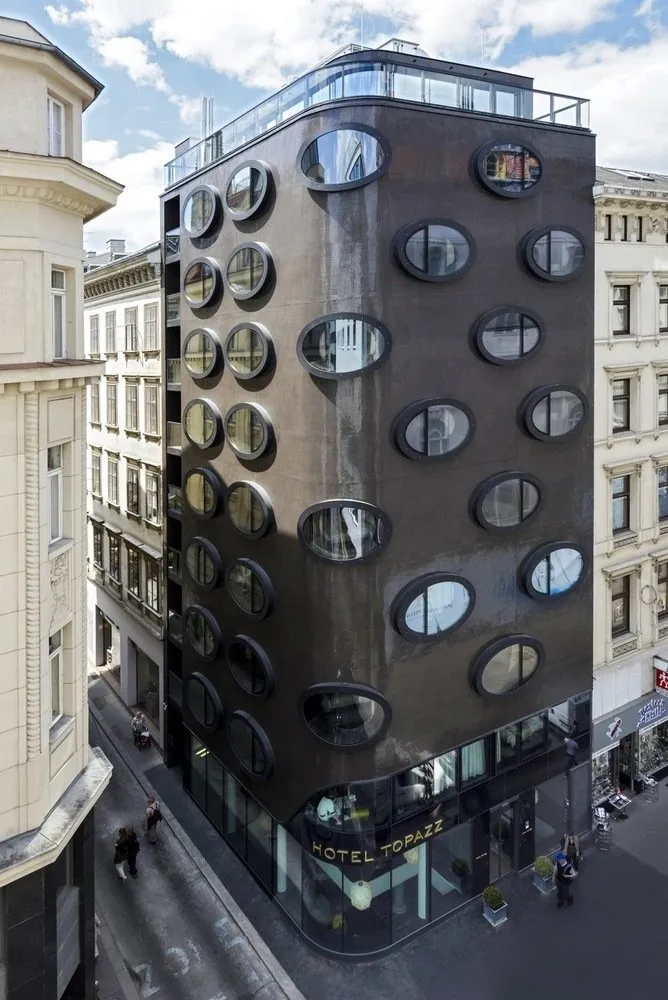 Hotel Topazz
Hotel Topazz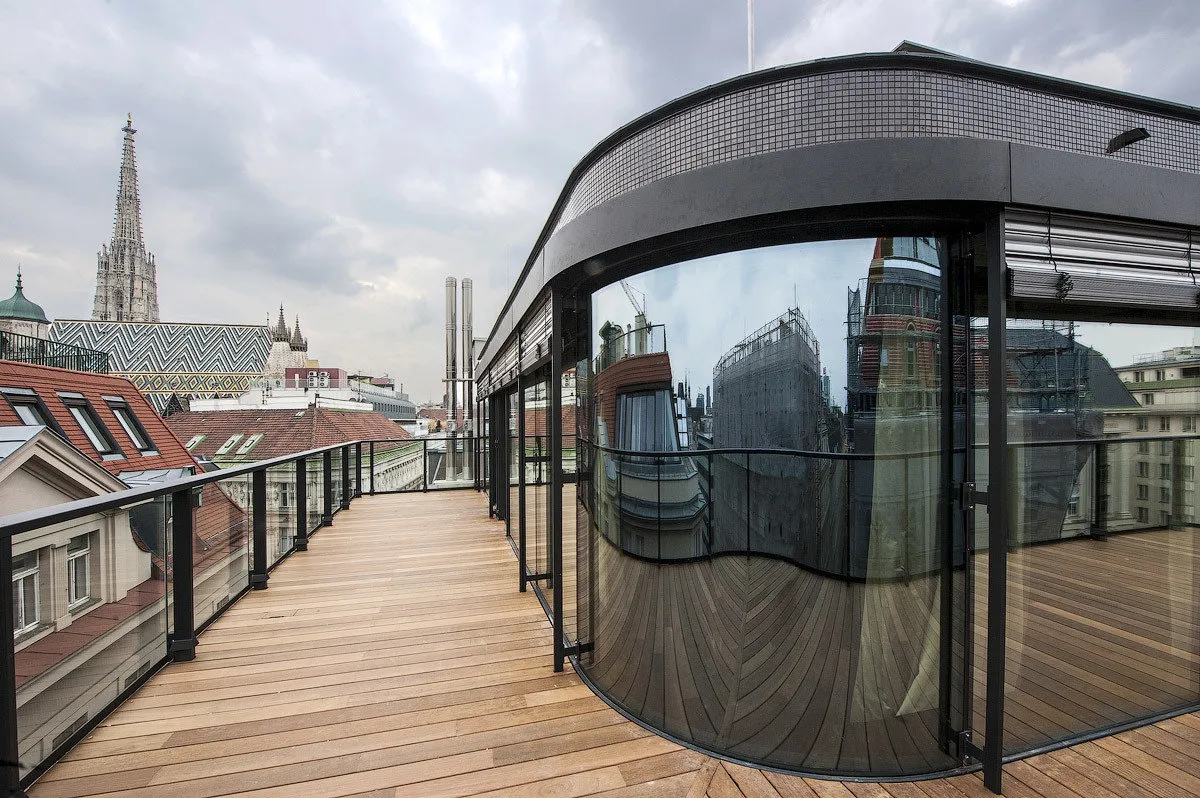 Hotel TopazzThe design of the Hotel Topazz project was inspired by the so-called Vienna Werkstätten style of the early 20th century. Vienna Werkstätten was a union of artists, architects, and craftspeople, with the main idea being to create beautiful things for everyday use. Items bearing the WW hallmark were made in single copies, successfully used in daily life, and brought aesthetic pleasure to their owners.
Hotel TopazzThe design of the Hotel Topazz project was inspired by the so-called Vienna Werkstätten style of the early 20th century. Vienna Werkstätten was a union of artists, architects, and craftspeople, with the main idea being to create beautiful things for everyday use. Items bearing the WW hallmark were made in single copies, successfully used in daily life, and brought aesthetic pleasure to their owners.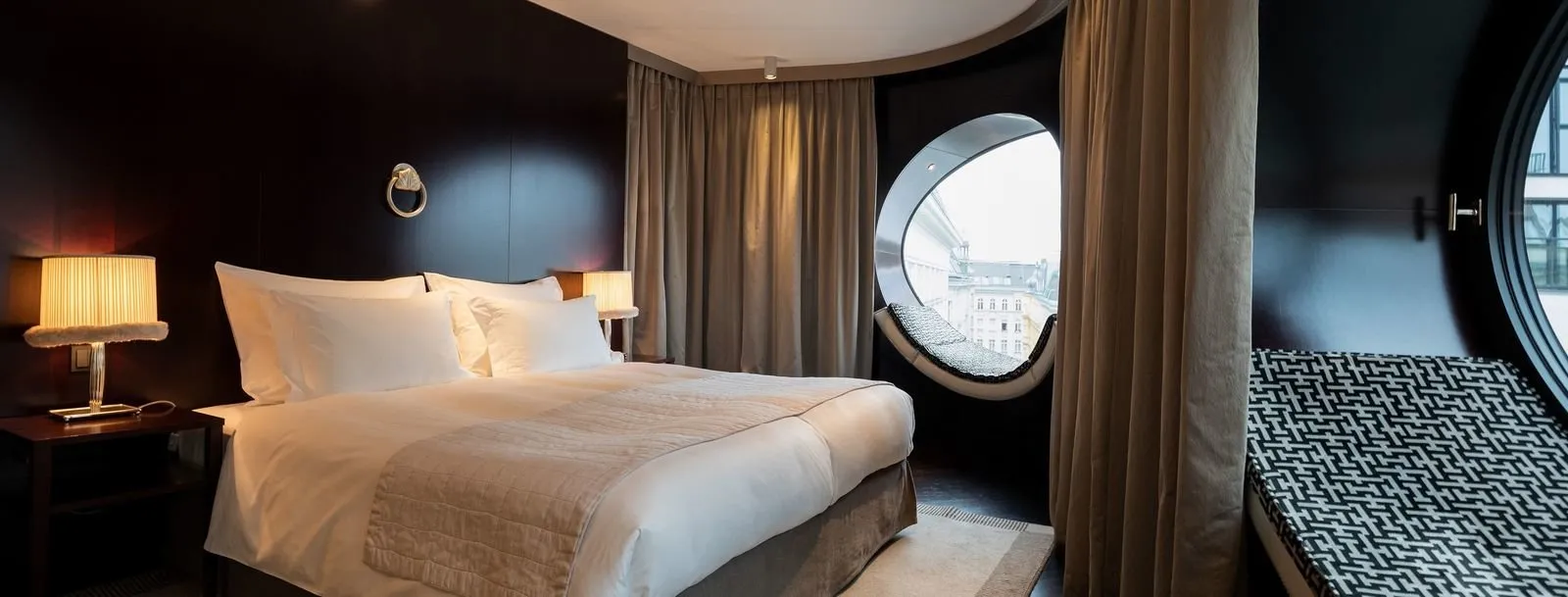 Cost of double occupancy at Hotel Topazz – from 13,000 rubles per night.
Cost of double occupancy at Hotel Topazz – from 13,000 rubles per night.The designer of the Sofitel Vienna Stephansdom project is a laureate of the prestigious Pritzker Architecture Prize, Jean Nouvel.
 Sofitel Vienna Stephansdom Hotel
Sofitel Vienna Stephansdom Hotel Cost of double occupancy at Sofitel Vienna Stephansdom – from 15,000 rubles per night.
Cost of double occupancy at Sofitel Vienna Stephansdom – from 15,000 rubles per night.On the 18th floor of the hotel is the Das LOFT restaurant with the best panoramic view of central Vienna. This restaurant is a hotspot for wine lovers and fans of innovative cuisine. Where else can you see an unusual "wine cellar": a built-in four-meter wine refrigerator? The exclusive ceiling design of the restaurant is handled by media designer Pipilotti Rist, who managed to create a sparkling contrast between a simple interior and a vibrant video ceiling with backlighting.
See the architectural monument of Austrian modernism (Jugendstil) – the Secession House. Friedrichstraße 12.
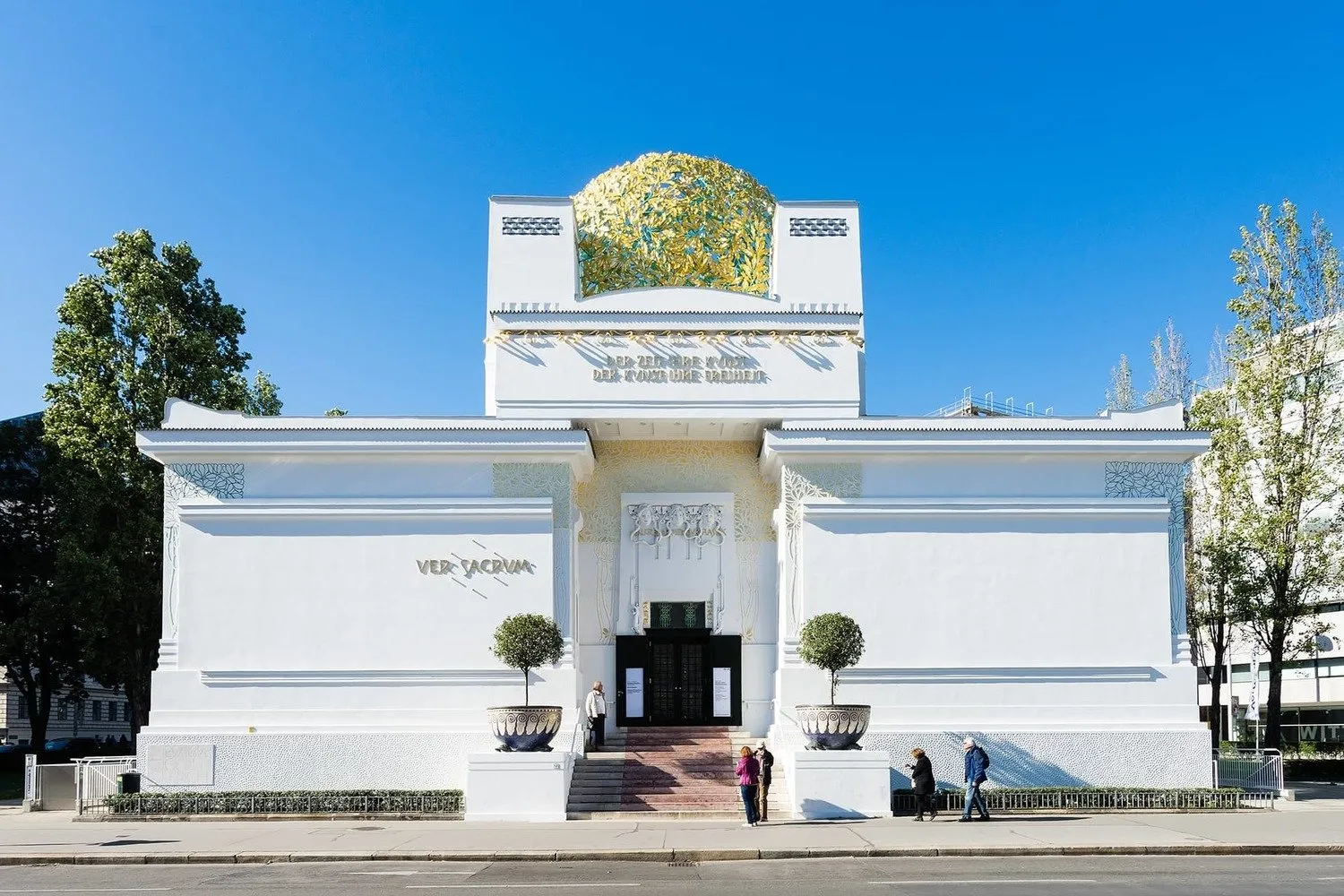
The Secession was envisioned as the "temple of art" of early modernism. Today it is a gallery where exhibitions of contemporary art are held.
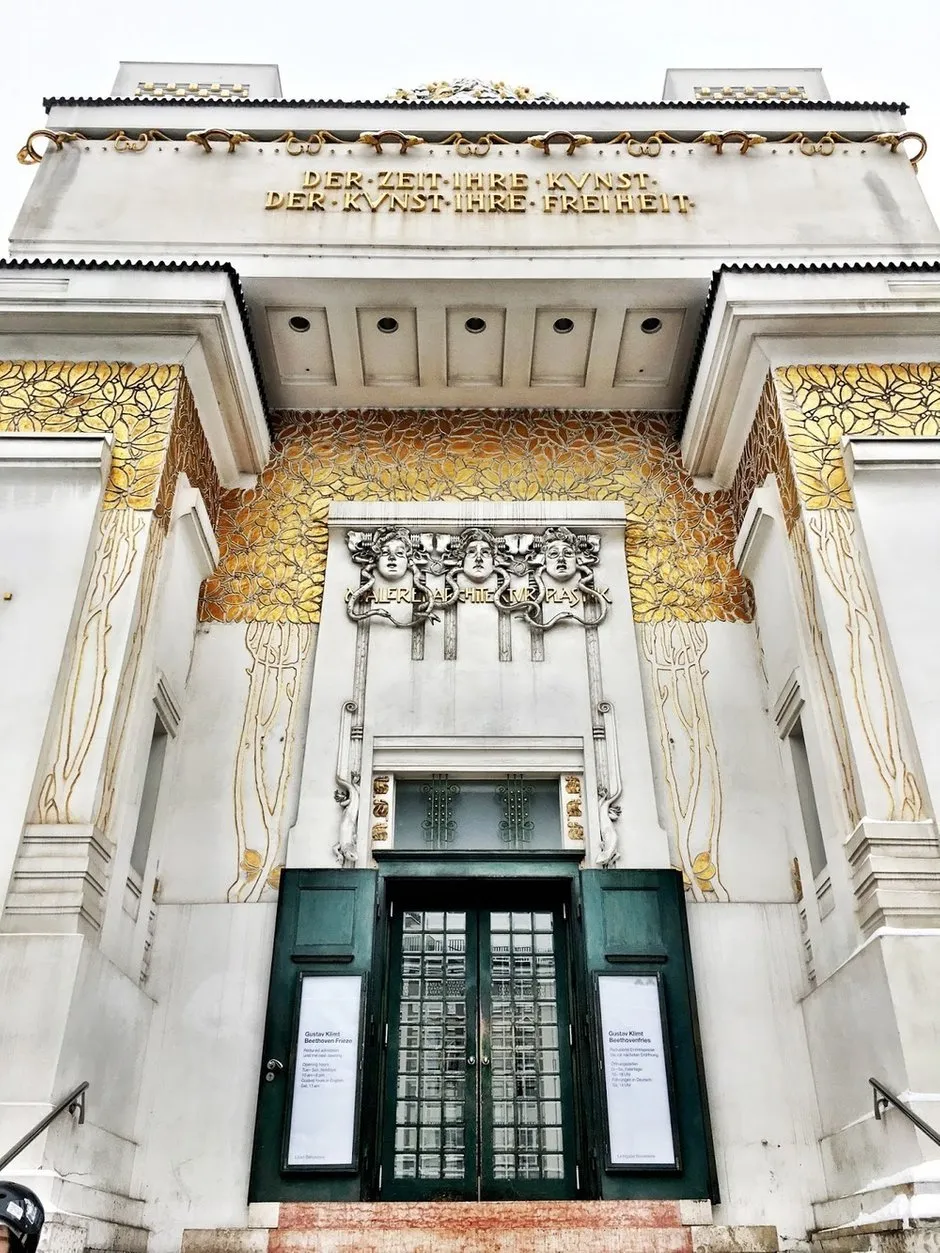
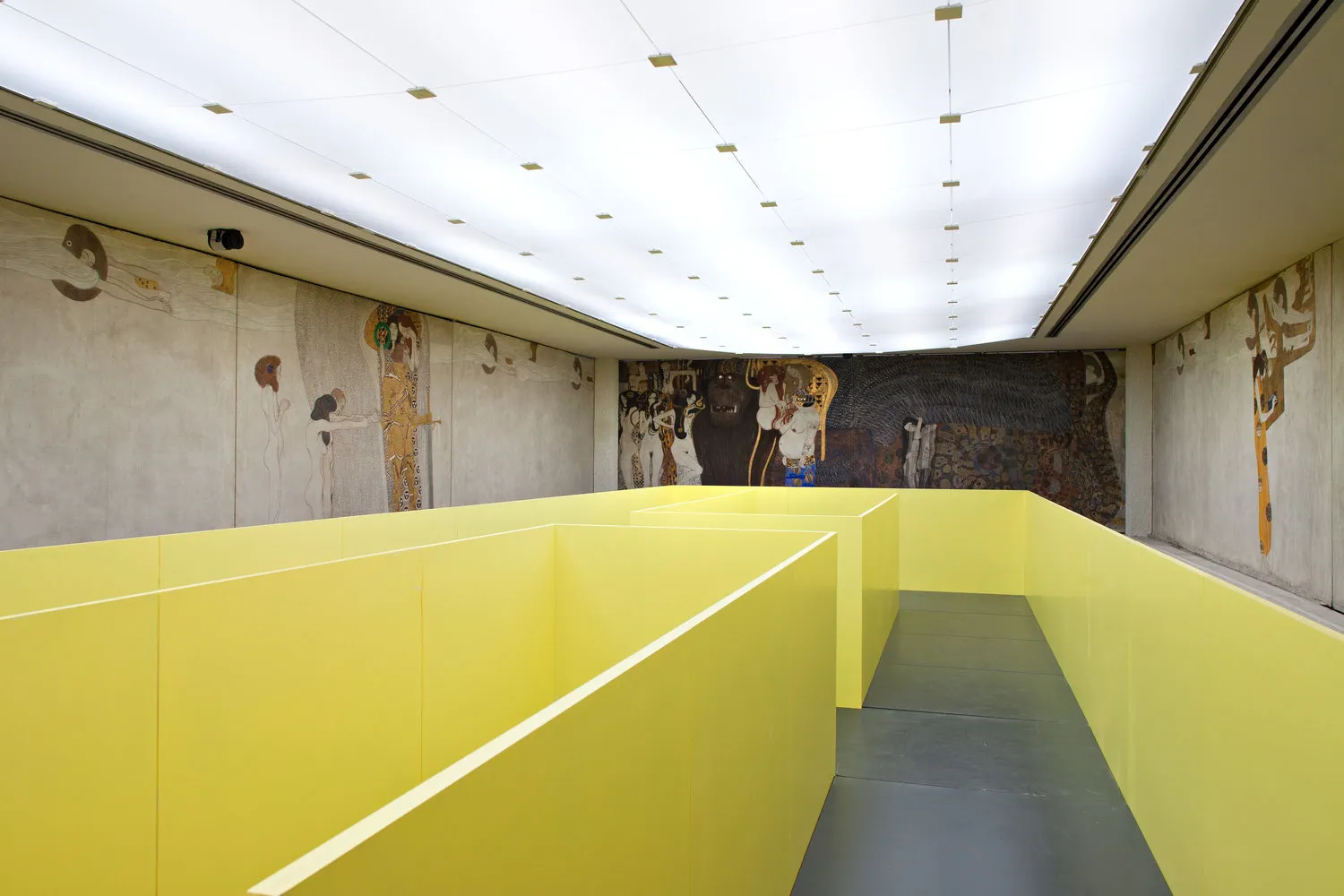 The Beethoven Frieze – a cycle of paintings by the Austrian artist Gustav Klimt dedicated to composer Ludwig van Beethoven.
The Beethoven Frieze – a cycle of paintings by the Austrian artist Gustav Klimt dedicated to composer Ludwig van Beethoven.Get to know the ideals of art and beauty of the Austrian artist and architect Friedrich Hundertwasser. The Hundertwasser House reflects his philosophy: freedom in everything, freedom of personality and architecture.
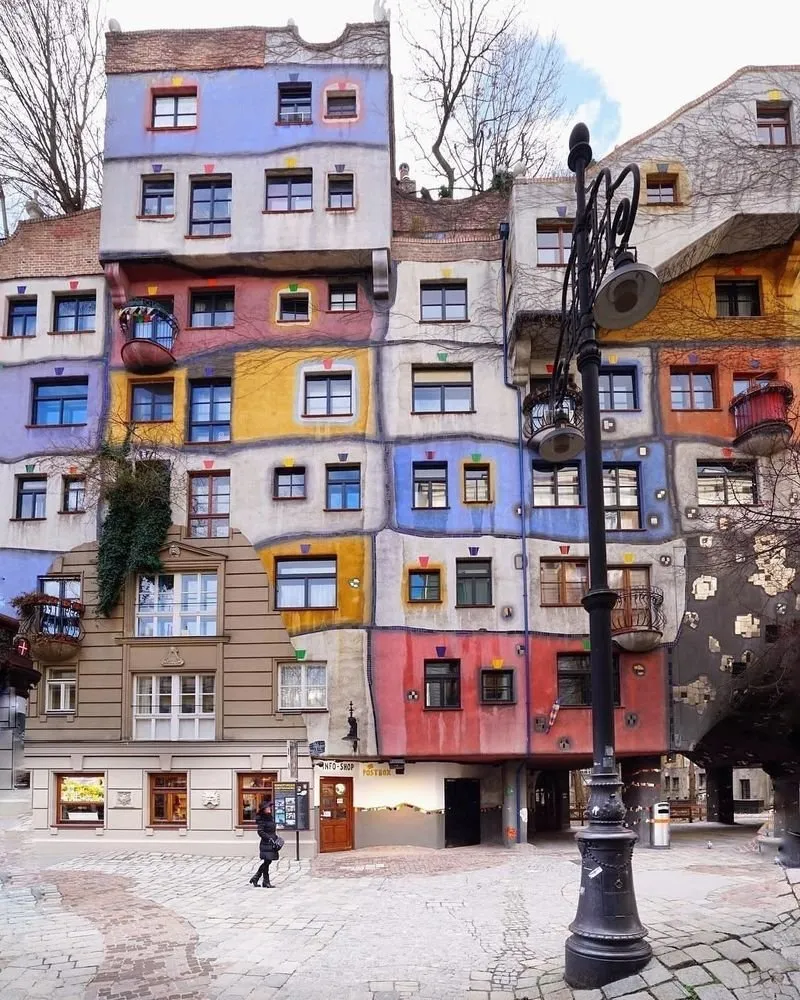 The colorful facade of the house is complemented by windows of different sizes and shapes, lack of straight lines, mosaics, and ornamental tiles in various colors. The building resembles hills, and the roof is covered with soil where flowers and shrubs are planted.
The colorful facade of the house is complemented by windows of different sizes and shapes, lack of straight lines, mosaics, and ornamental tiles in various colors. The building resembles hills, and the roof is covered with soil where flowers and shrubs are planted.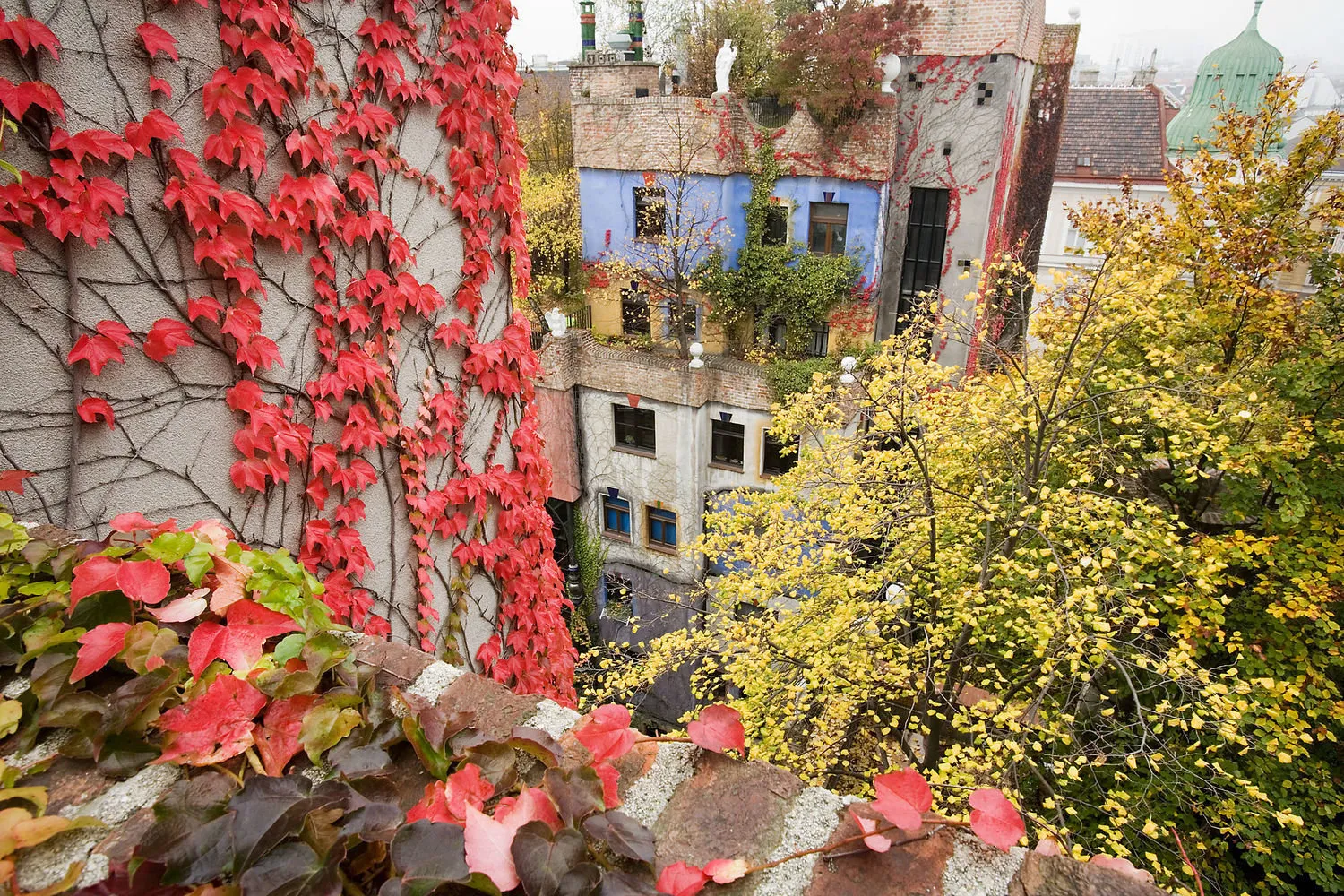
Walk through the grounds of the new campus of the Vienna University of Economics and Business (Welthandelsplatz 1). Each building was designed by a different architect.
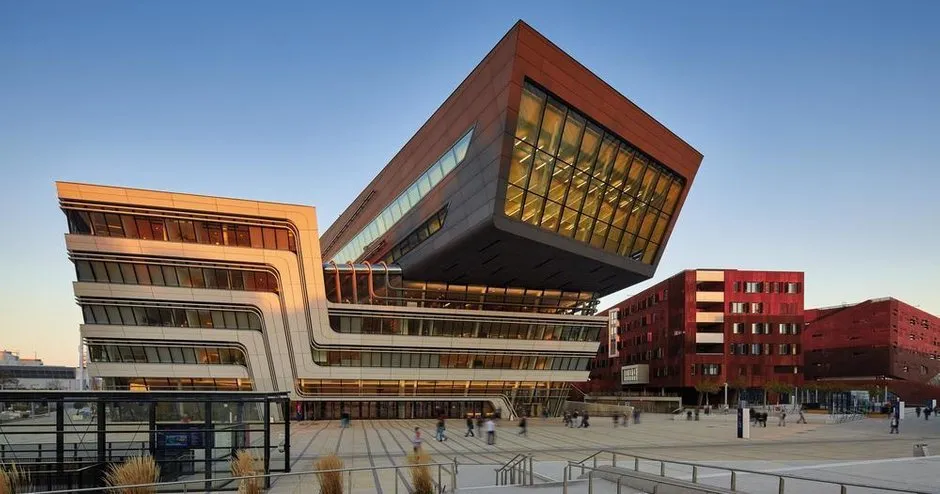
The central building was designed by the architectural firm Zaha Hadid Architects. It is tilted at an angle of 25–33 degrees and built in a futuristic architectural style.
Visit the Austrian Museum of Applied and Contemporary Art (Stubenring 5), where design as an object of creativity plays a key role. The museum presents items made of glass and porcelain, silver, and textiles.
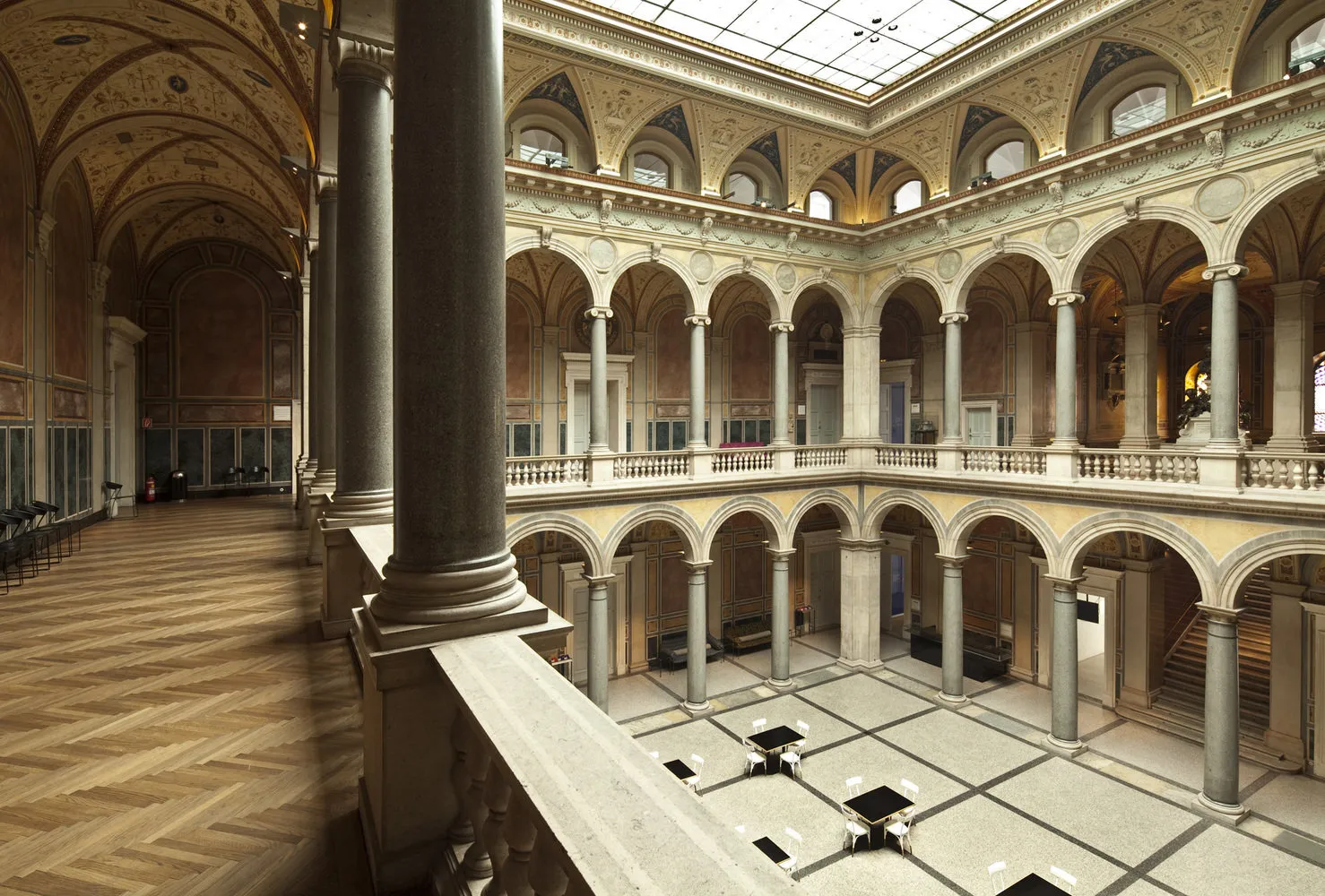
In addition, this museum has exhibits featuring a large collection of works by Vienna Werkstätten and furniture made from bent wood by the Thonet factory, including the iconic No. 14 Vienna coffeehouse chair. The entrance ticket costs 12 euros, but every second Tuesday from 18:00 to 22:00 it costs only five euros.
Permanent Collection of the MAK Museum, Vienna 1900
Near the museum is a shop with quite interesting decorative items – MAK Design Shop.

Add the Vienna Gasometers (Guglgasse 8) to your route – a prime example of how abandoned industrial buildings can organically be restructured into residential, office, and recreational zones.
The gasometers were closed at the end of the 20th century when Vienna stopped using coke gas in favor of natural gas. Later, a competition for ideas on rebuilding the gasometers was announced – architects gave new life to the abandoned space. The Austrian architectural firm Coop Himmelb(l)au built a curved residential tower attached to one of the gasometers.
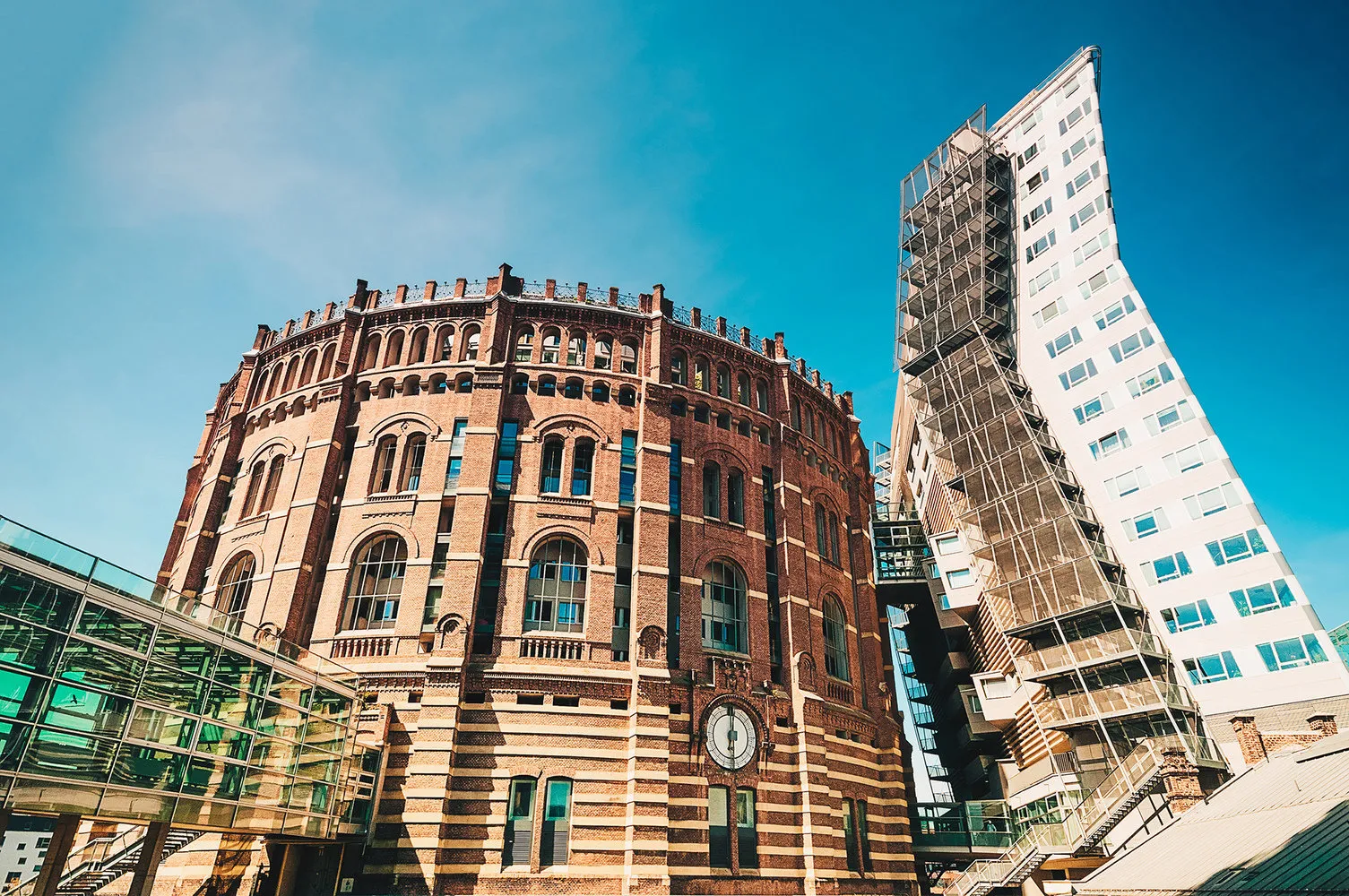
Drink coffee at Café at Palmenhaus (Burggarten 1), located in the famous palace greenhouse of Hofburg Park under the glass dome of the 19th–20th century.
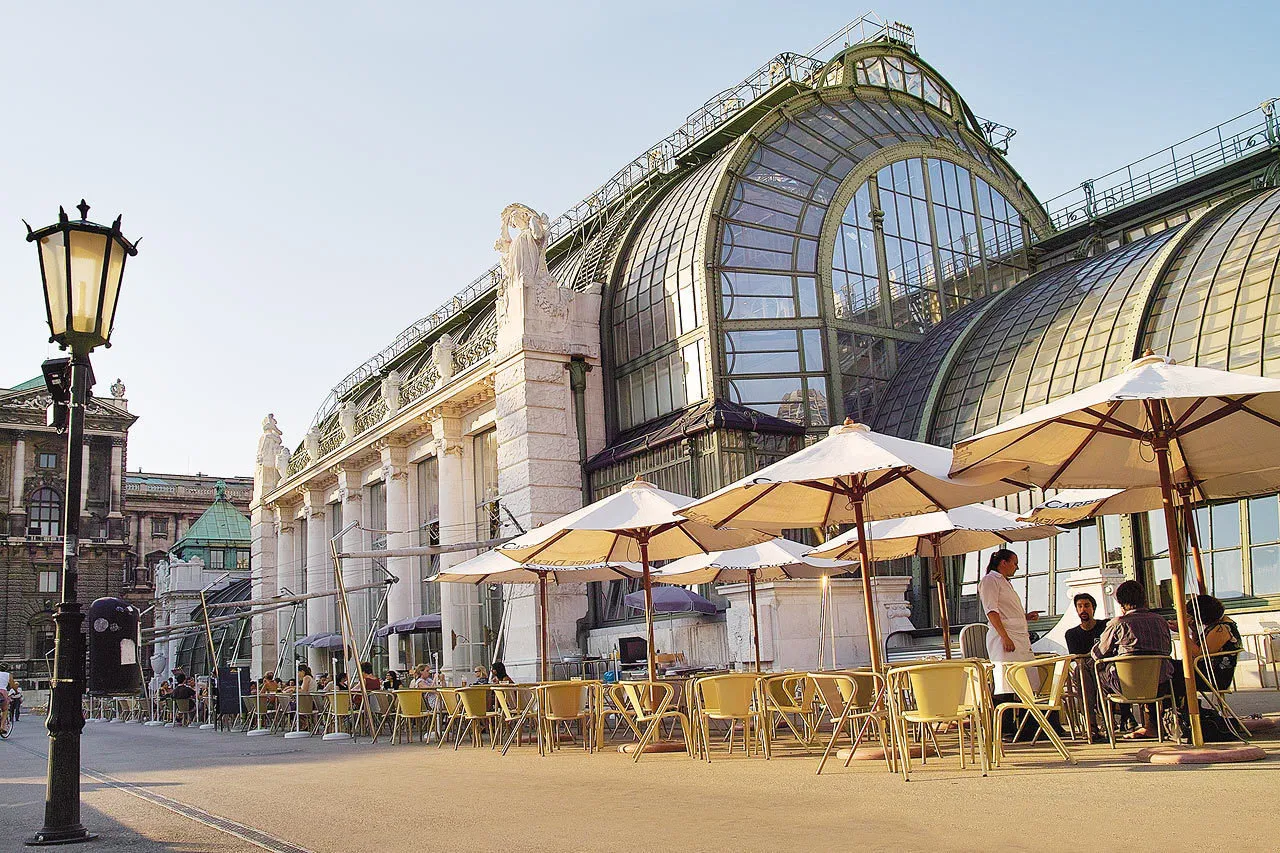

Do not miss the candle shop Retti (Stallburggasse 2). This is one of the first commissions for the Austrian architect and designer Hans Hollein.
A small space made of aluminum and mirrors, decorated in the style of postmodernism. It was awarded the American Reynolds Prize as the smallest architectural work.
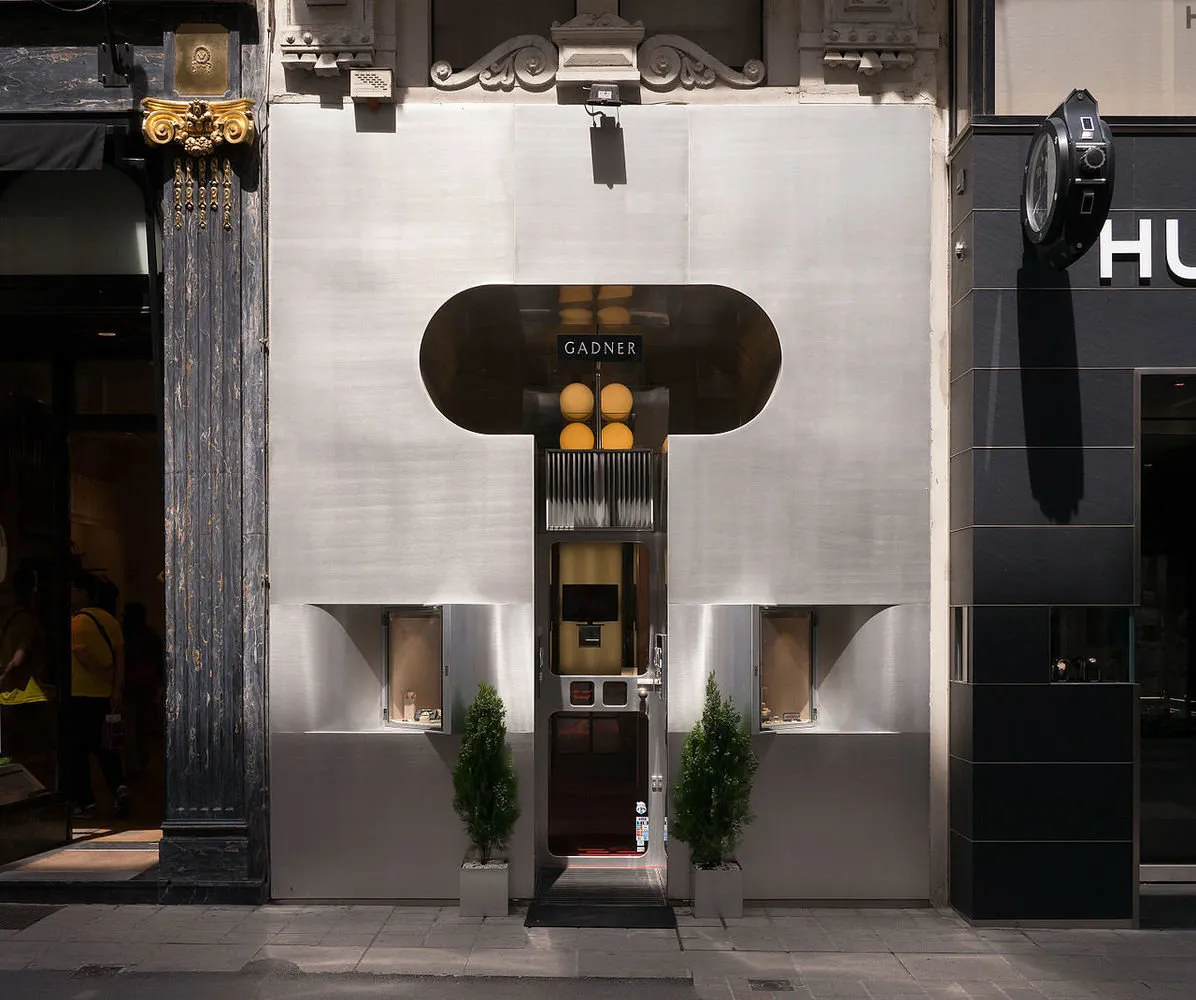
Do not forget to visit the Vienna Porcelain Manufactory at the Augarten Castle (Obere Augartenstraße 1), where porcelain is still made and hand-painted today.
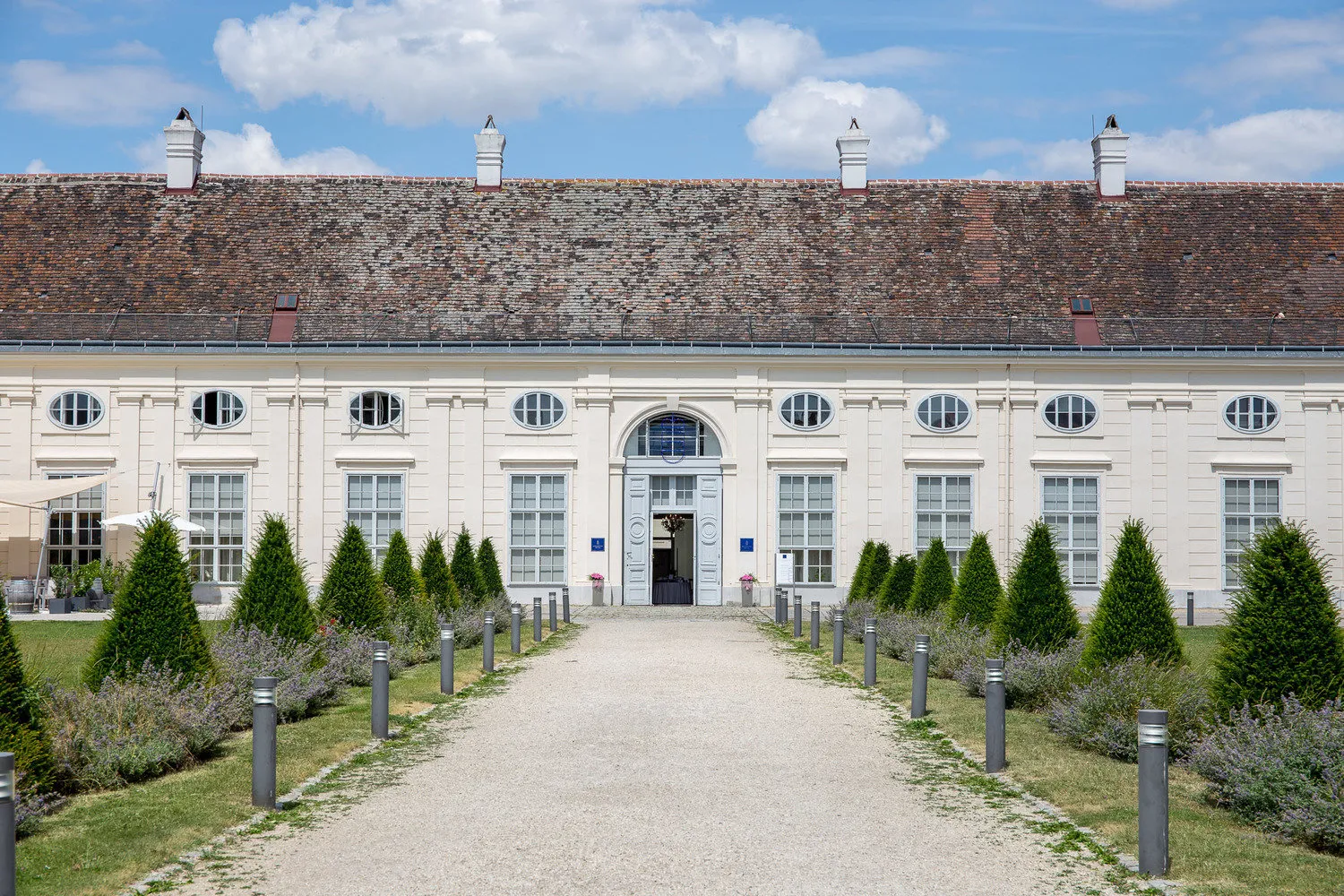
Vienna porcelain is renowned for its delicate and elegant form, clean lines, and refined craftsmanship. Each Augarten porcelain piece is not only a work of art but also a symbol of Austrian traditions that have been passed down for 300 years.
Distinctive stylistic feelings of the 1950s. Features of this era include floating decorations, modern forms, and elegant design. The Melone ("Melon") Collection
There is a Porcelain Museum on the premises of the manufactory, displaying 25,000 different items from tableware to interior design, from classical decorations to unusual forms and pieces created in collaboration with well-known artists.
Drink a glass of wine at Kleines Café Wien (Franziskanerplatz 3), located in the heart of the Old Town.
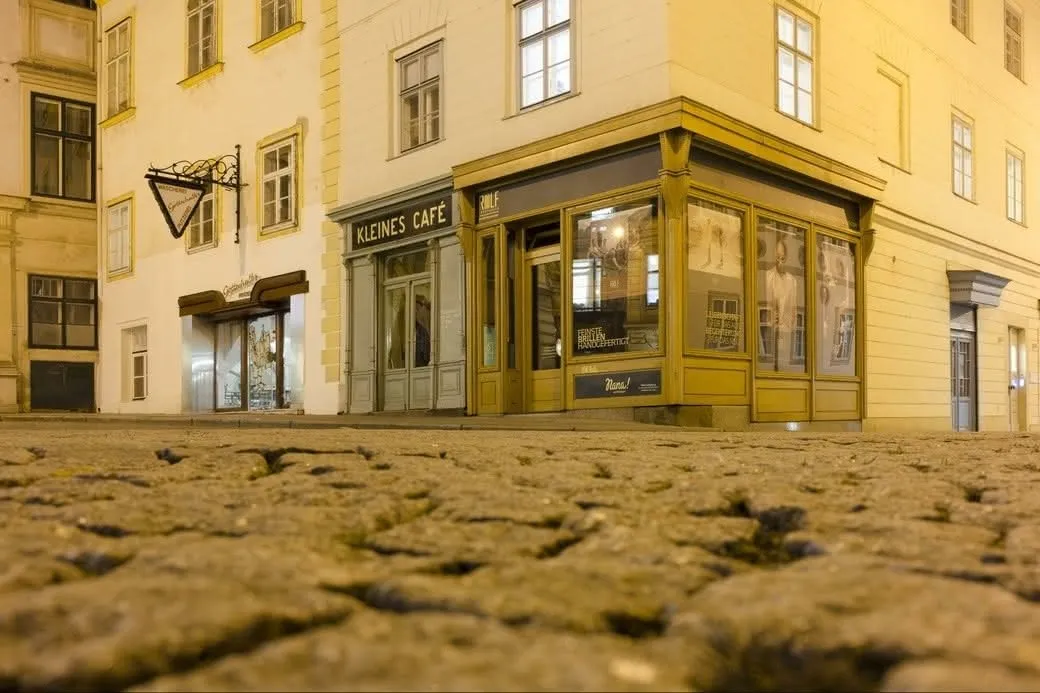
This eclectic cozy place where local residents, artists, students, and random tourists sit side by side on comfortable leather sofas. It's pleasant to sit here with the famous Viennese melange or a glass of Austrian wine.
Dine at the Corbaci restaurant (Museumsplatz 1) in the Museum Quarter. The design was developed by French architects Ann Lacaton and Jean Philippe Vassal in collaboration with Turkish artist Asia Kolbay-Kaftalier.
The uniqueness of this place is the "heavenly vault" on the ceiling, executed in the traditions of Eastern ceramics. "Here we had brick vaults, and the project idea is simple: hang the 'heavens' in this space," explains Ann Lacaton about the project.
Relax in the center of Vienna at the Amalienbad spa complex (Reumannplatz 23). It is located in a building in the Art Deco style with a dome-shaped roof.
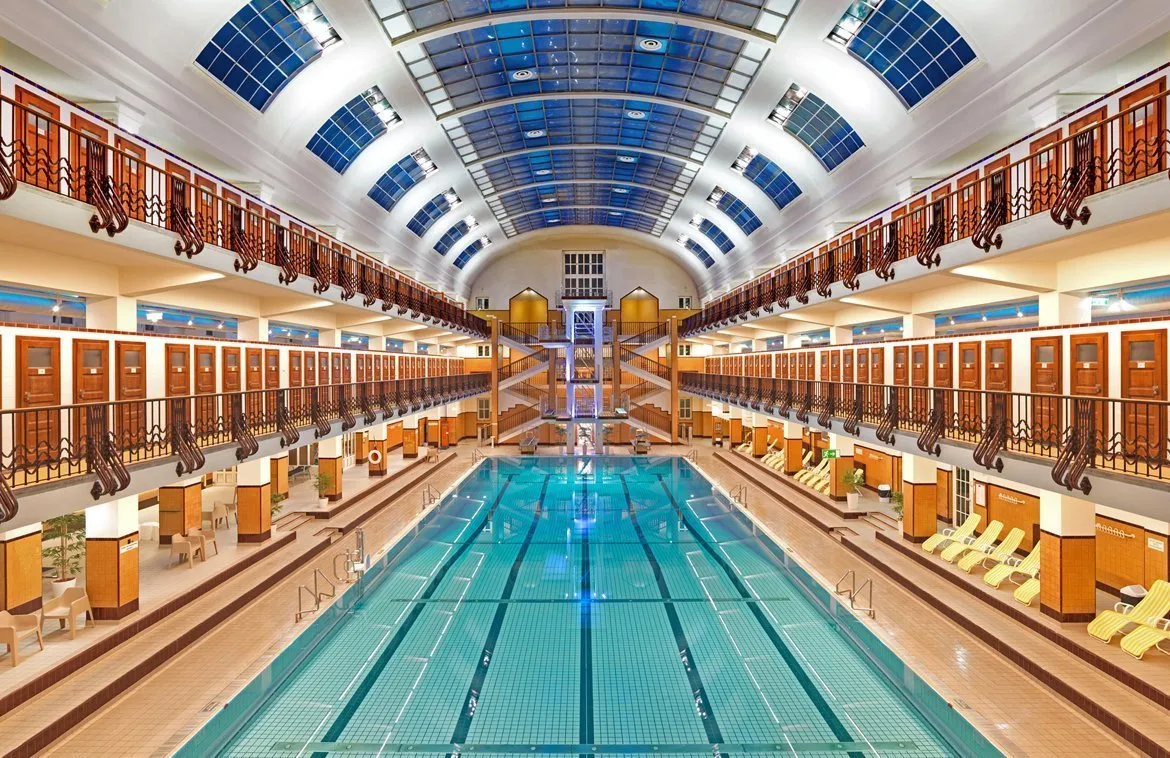

For those interested in graphic design, we recommend visiting the Vienna Design Forum (quartier 21/MQ, Museumsplatz 1) – a space for exhibitions and events dedicated to design in the heart of the city.
Since its opening in 2006, designforum has organized exhibitions of graphic design and multimedia, and once every two years, it awards the Austrian State Prize in Design and the Josef Binder Prize. This is the only international competition in the field of graphic design and illustration. You can follow designforum events at: http://www.designforum.at/w/
Bring back from the trip glass spheres from Schneekugelmanufaktur, porcelain from the Vienna manufactory Augarten, crystal souvenirs from Lobmeyr or Swarovski. You can find souvenirs for any taste at the Imperial Shop Vienna (Hofburg — Heldenplatz).

Additionally, the Vienna Naschmarkt (Wienzeile) is a must-visit, where you can have lunch in trendy cafés and gourmet restaurants, buy groceries and delicacies, and on Saturdays stroll through the iconic flea market.

More articles:
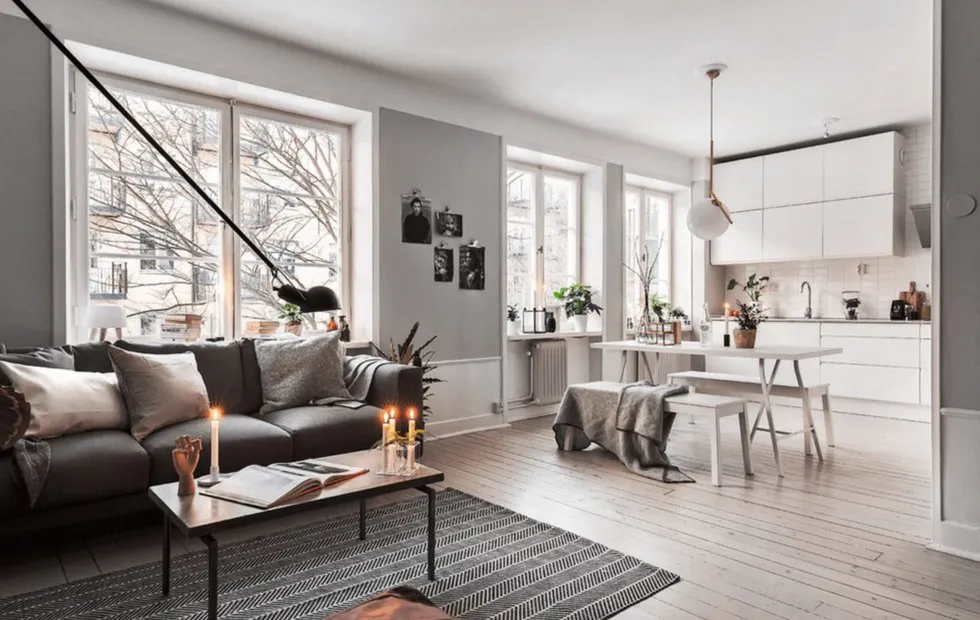 How to Decorate an Interior in the Hygge Style
How to Decorate an Interior in the Hygge Style How to Avoid Mistakes When Choosing a Foreman for Apartment Renovation
How to Avoid Mistakes When Choosing a Foreman for Apartment Renovation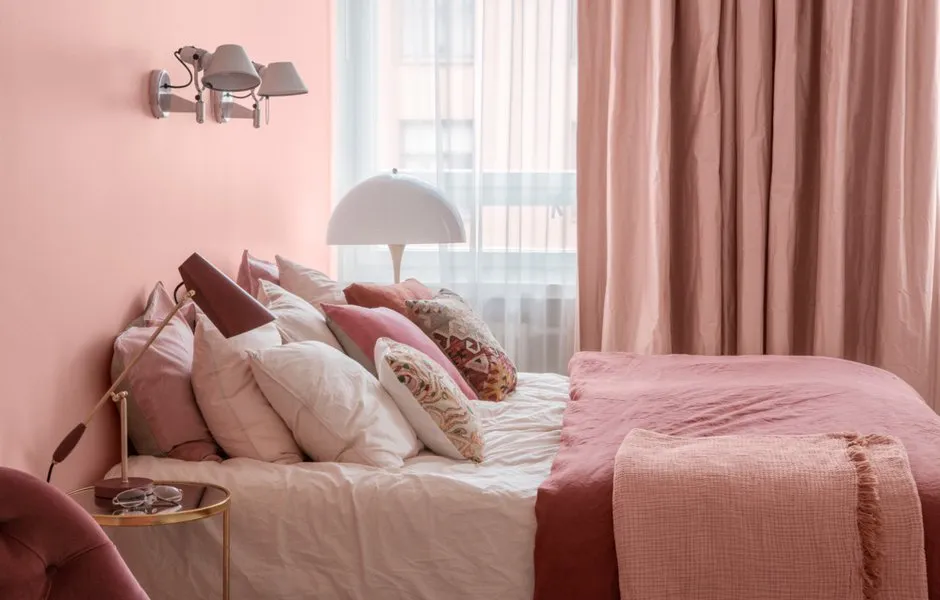 Pink Color in Interior Design: Bright Examples and Designers' Tips
Pink Color in Interior Design: Bright Examples and Designers' Tips Guide: 7 Apartments in Pastel Tones
Guide: 7 Apartments in Pastel Tones 4 Reasons Why a Designer Might Reject a Project
4 Reasons Why a Designer Might Reject a Project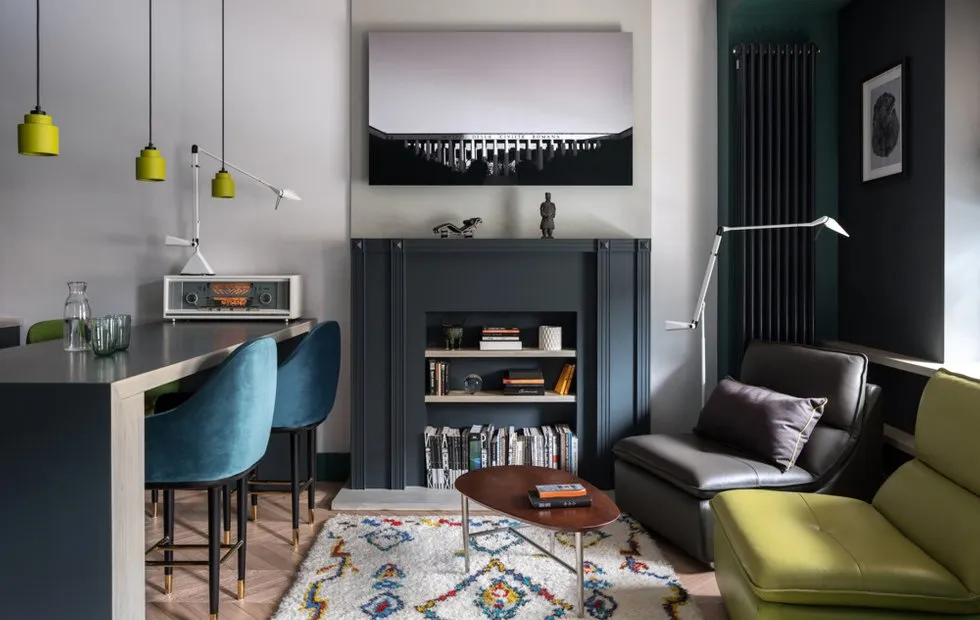 6 Color Solutions for Small Apartments
6 Color Solutions for Small Apartments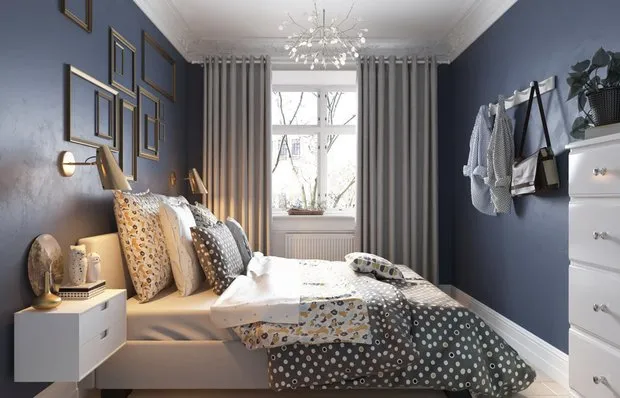 14 Design Hacks That Will Improve Your Interior
14 Design Hacks That Will Improve Your Interior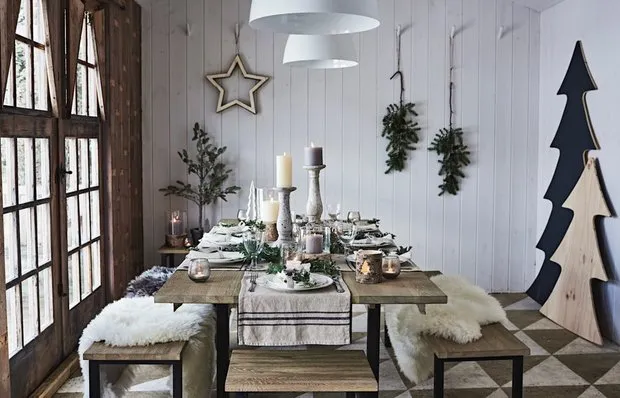 New Year's Wishlist of Designer Elena Ivanova
New Year's Wishlist of Designer Elena Ivanova